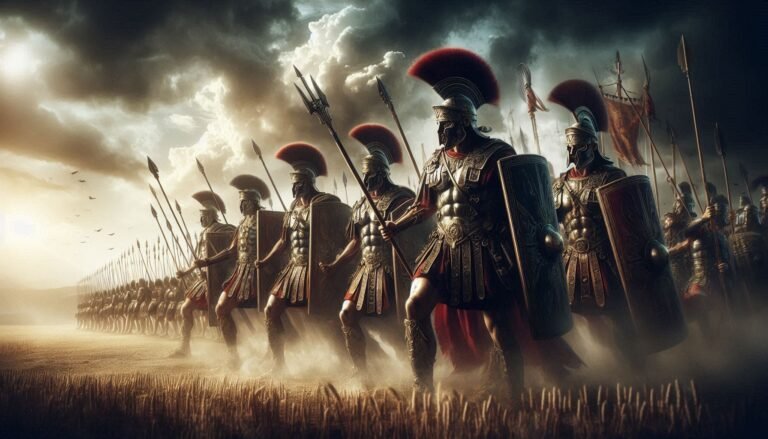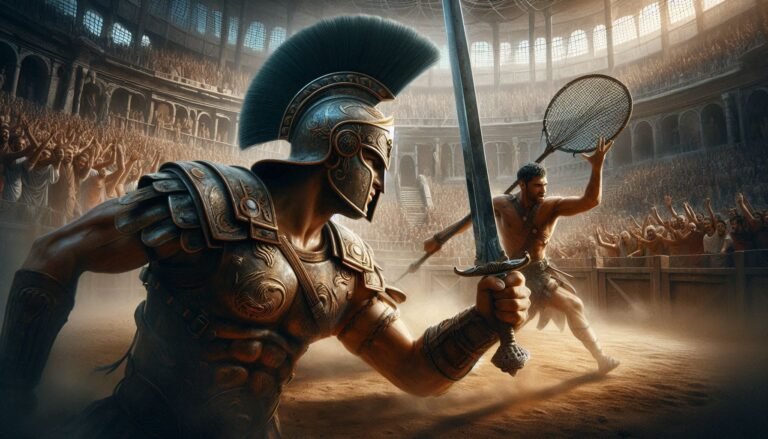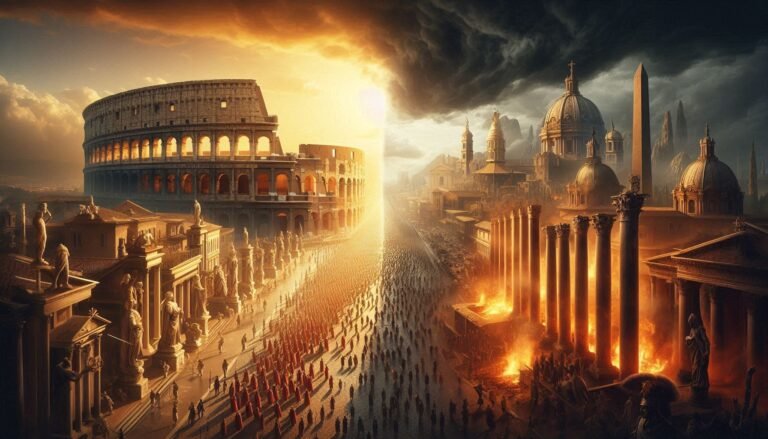The Colosseum, also known as the Flavian Amphitheater, is one of the most iconic symbols of Ancient Rome. This massive arena, built nearly 2,000 years ago, was the epicenter of Roman entertainment, where gladiators battled to the death, wild animals were hunted, and prisoners were executed in gruesome spectacles. While it remains a marvel of engineering and architecture, the Colosseum also reflects the darker aspects of Roman society—its obsession with violence, its rigid social hierarchy, and the power dynamics that shaped its bloody history.
The Construction of the Colosseum
The Colosseum was commissioned in 70 CE by Emperor Vespasian of the Flavian dynasty and was completed in 80 CE by his son Titus. Built on the site of Nero’s extravagant Golden House (Domus Aurea), the Colosseum was meant to erase the memory of the tyrannical emperor and give the land back to the people. It was a statement of imperial power and generosity, reinforcing the idea that the emperor cared for his citizens by providing them with grand entertainment.
Architectural Marvel
The Colosseum was the largest amphitheater of its time, capable of holding 50,000 to 80,000 spectators. Its design was revolutionary:
- Oval Shape: Ensured better visibility for spectators.
- Vaulted Arches: Allowed for quick access and efficient crowd movement.
- Hypogeum (Underground Chambers): A network of tunnels and cages housed gladiators, animals, and stage machinery.
- Retractable Awning (Velarium): Provided shade for spectators using an elaborate system of ropes and pulleys.
This architectural ingenuity enabled the Colosseum to host massive and elaborate events, solidifying its place as the heart of Roman entertainment.
The Spectacles: Blood and Glory
The Colosseum was more than just an arena—it was a stage for life-and-death performances that satisfied the Roman appetite for bloodshed and spectacle. These events were often funded by emperors or wealthy elites to gain political favor and public admiration.
1. Gladiatorial Combat
Perhaps the most famous events at the Colosseum were the gladiator battles. These fighters were often slaves, prisoners of war, or criminals, though some free men voluntarily became gladiators for fame and fortune. They trained in ludi (gladiator schools), where they specialized in different fighting styles:
- Murmillo: Heavily armored with a large shield and short sword.
- Retiarius: Lightly armored, fought with a net and trident.
- Thraex: Wielded a curved sword and a small shield.
The fate of defeated gladiators was often in the hands of the emperor or the crowd, who would indicate mercy or execution—though this “thumbs up/thumbs down” gesture is debated among historians.
2. Wild Animal Hunts (Venationes)
Exotic beasts such as lions, tigers, elephants, and bears were imported from Africa and the Middle East to be hunted by trained fighters known as venatores. These events showcased Rome’s dominance over nature and its vast empire. Sometimes, the animals themselves fought each other in brutal staged battles.
3. Public Executions (Damnatio ad Bestias)
One of the most chilling aspects of Colosseum entertainment was the public execution of criminals and prisoners. Some were thrown to wild animals, while others were forced to reenact mythological deaths, such as being burned alive or crucified. These gruesome punishments served as a warning to the Roman population about the consequences of defying imperial rule.
4. Naval Battles (Naumachiae)
In some instances, the Colosseum was flooded with water to stage mock naval battles. These spectacular events recreated famous sea battles, with real ships and combatants fighting for survival.
The Social Hierarchy of Spectators
Seating in the Colosseum reflected the rigid class divisions of Roman society:
- The Emperor and Senators: Sat in the best seats, close to the arena.
- Equestrians (Wealthy Nobles): Had designated seating areas.
- Plebeians (Common Citizens): Occupied the middle tiers.
- Women, Slaves, and the Poor: Were forced to sit at the very top or even stand.
This arrangement reinforced the power structure of Rome, making the Colosseum not just a place of entertainment but also a microcosm of Roman society.
The Dark Side of Roman Entertainment
While the Colosseum symbolized Rome’s engineering genius and grandeur, it also exposed its brutality and moral contradictions.
1. The Cost of Human Life
Tens of thousands of gladiators and animals perished in the Colosseum. The games desensitized people to violence, turning death into public entertainment rather than tragedy.
2. Political Propaganda
The games served as a tool for emperors to maintain control over the masses. By providing free entertainment, they distracted citizens from political corruption, economic issues, and military defeats. The phrase “Panem et Circenses” (Bread and Circuses) captures this idea—keep the people entertained, and they won’t rebel.
3. The Environmental Impact
The demand for exotic animals led to significant wildlife depletion across Africa and Asia. Some species were hunted to extinction for the sake of Roman spectacle.
The Decline of the Colosseum
By the 5th century CE, gladiatorial combat declined due to:
- The rise of Christianity, which opposed blood sports.
- The economic struggles of Rome, making games too costly.
- Barbarian invasions and the fall of the Western Roman Empire (476 CE).
The Colosseum was later used as a fortress, church, and quarry for building materials. Earthquakes and neglect led to its deterioration, but despite this, it has endured as one of Rome’s greatest landmarks.
The Colosseum Today: A Symbol of the Past
Today, the Colosseum stands as a UNESCO World Heritage Site and one of the New Seven Wonders of the World. While it attracts millions of tourists each year, it also serves as a reminder of Rome’s glorious yet brutal past. It symbolizes the heights of human ingenuity and the depths of human cruelty—a place where blood was shed for the amusement of the masses.
The Legacy of the Colosseum
The Colosseum remains an enduring testament to the power and contradictions of Ancient Rome. It was both a place of engineering brilliance and unimaginable cruelty, a site of imperial propaganda and popular spectacle. The lessons from its history still resonate today, reminding us of the fine line between entertainment and exploitation, power and oppression.
Though the sounds of battle no longer echo within its walls, the Colosseum continues to captivate the world, standing as a monument to the fascinating and often dark complexities of Roman civilization.



